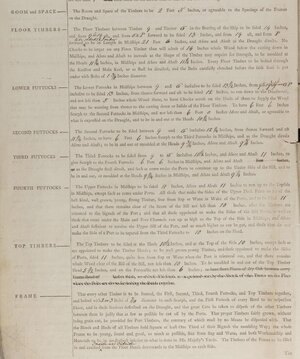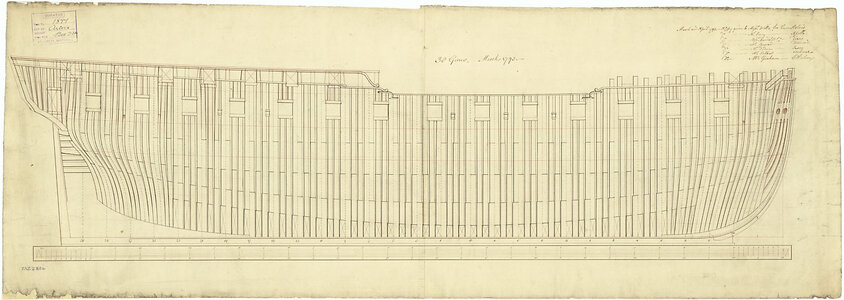IMO, What he may have done in his personal life doesn't dimish the value of his work. I and MANY others in this association have and will continue to use and reference his work.Wasn't William J. Romero convicted of child sexual abuse? If so why would anyone use or recommend anything of his after what he did?
Allan
-

Win a Free Custom Engraved Brass Coin!!!
As a way to introduce our brass coins to the community, we will raffle off a free coin during the month of August. Follow link ABOVE for instructions for entering.
You are using an out of date browser. It may not display this or other websites correctly.
You should upgrade or use an alternative browser.
You should upgrade or use an alternative browser.
What is the Correct way to create ribs on a scratch build.
Exactly,his shipmodeling books have nothingvto do with his personal life .IMO, What he may have done in his personal life doesn't dimish the value of his work. I and MANY others in this association have and will continue to use and reference his work.
couldn't have said any betterTo each his own, the freedom of choice is a wonderful thing.
- Joined
- Dec 1, 2016
- Messages
- 6,221
- Points
- 728

getting back to how real ship were framed and how models are framed.
For one thing models are built with exact sizes and measurements. that is a frame is 6mm and the space is 3mm and every frame and space are the same.
In real ship building the space between frames would vary by 2 or more inches same with the framing not all the frames were the same sided dimension real ship building was random. There are so many variables in framing a hull. Some had a solid wall of timbering at the floors some did not. Some frames tapered from the floors to the top timbers. Some filled the spaces between frames from the wales to the cap rail.
futtocks were butt together others used scarfs some used chocks some frames used all three. Some were sistered called bends and filler frames added between the bends that were held in place by the hull planking.
you could say ALL model ships are a stylized framing unless you are working directly from a ship wreck with all framing intact. There were standards but they were more a rule of thumb.
if anyone wants to try their first plank on frame model i suggest looking into a Harold Hahn model and getting a timbering set that has all the framing stock milled.
it is not that easy so start small until you get the experience then go bigger. A tip is to start with a small ship at a larger scale rather than a bigger ship at a smaller scale.
and as far as "built like a real ship" forget about it you can only come close in general terms and methods.
For one thing models are built with exact sizes and measurements. that is a frame is 6mm and the space is 3mm and every frame and space are the same.
In real ship building the space between frames would vary by 2 or more inches same with the framing not all the frames were the same sided dimension real ship building was random. There are so many variables in framing a hull. Some had a solid wall of timbering at the floors some did not. Some frames tapered from the floors to the top timbers. Some filled the spaces between frames from the wales to the cap rail.
futtocks were butt together others used scarfs some used chocks some frames used all three. Some were sistered called bends and filler frames added between the bends that were held in place by the hull planking.
you could say ALL model ships are a stylized framing unless you are working directly from a ship wreck with all framing intact. There were standards but they were more a rule of thumb.
if anyone wants to try their first plank on frame model i suggest looking into a Harold Hahn model and getting a timbering set that has all the framing stock milled.
it is not that easy so start small until you get the experience then go bigger. A tip is to start with a small ship at a larger scale rather than a bigger ship at a smaller scale.
and as far as "built like a real ship" forget about it you can only come close in general terms and methods.
You are probably right to a great extent David but with contemporary framing plans and scantlings from contemporary contracts available in many cases, one can at least start with the same information the yard had when they built the actual ship. There are hundreds of contracts for British ships at the National Archives in Kew and RMG and many framing drawings at RMG and on the WikiCommons site for those that want to get as close as the yard might have done. A perfect example is the Artois 1794 class. Contract used for seven ships of her class written in 1793 is loaded with details, including framing. I think the below contract and framing disposition drawing gives one a chance to get as close to the actual sizes as the shipyards. The plan below is low res from the RMG Collections site The high res version from the Wiki site is too large to post here."built like a real ship" forget about it you can only come close in general terms and methods.

Note on the below from 1793 , the names of the builders and ships they were to build to this drawing are in the top right corner. This drawing can be found in high resolution on the WikiCommons site and low res on the RMG Collections site.

Last edited:
- Joined
- Dec 1, 2016
- Messages
- 6,221
- Points
- 728

I think the below contract and framing disposition drawing gives one a chance to get as close to the actual sizes as the shipyards.your absolutely correct by starting with known contracts your in the ball park. The contracts and building rules were tweaked by ship builders from yard to yard but the general rules were followed.
go here for information
ModelShipBuilder
Home of the MSB Journal, and a community for model ship, model boat and nautical diorama model builders.
also here is an example of a work book of master shipwright at the Philly shipyard around 1770ish.
i would read model builders need a good set of plans in order to build a ship model. Then i got to thinking Durning the war of 1812 on the Great Lakes ships were built by the French, English and Americans from small brigs to first rate 100 gun ships without plans. There were plans drawn after the ships were built. You can build a ship 'by the numbers" and no drawn plans. hum interesting how they did it.


